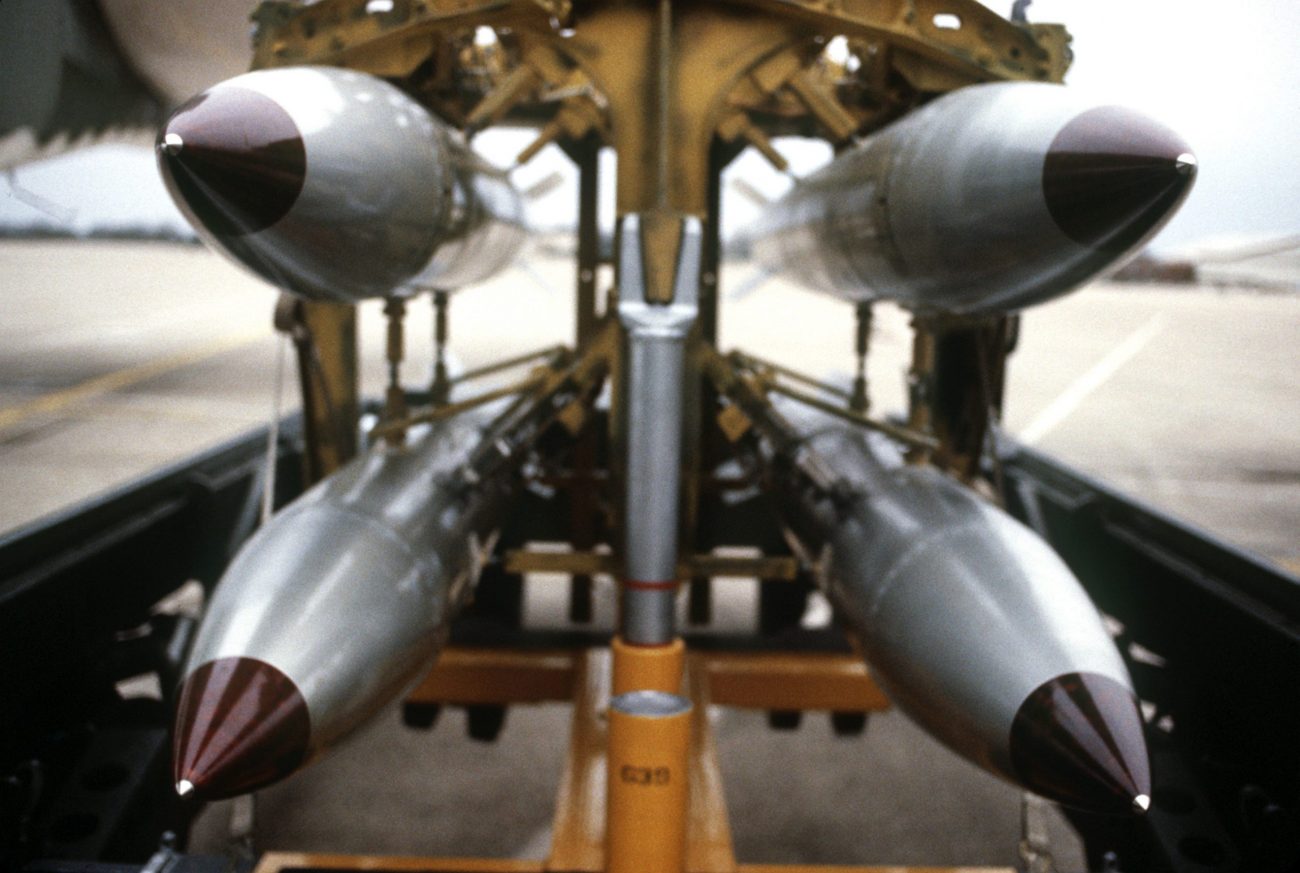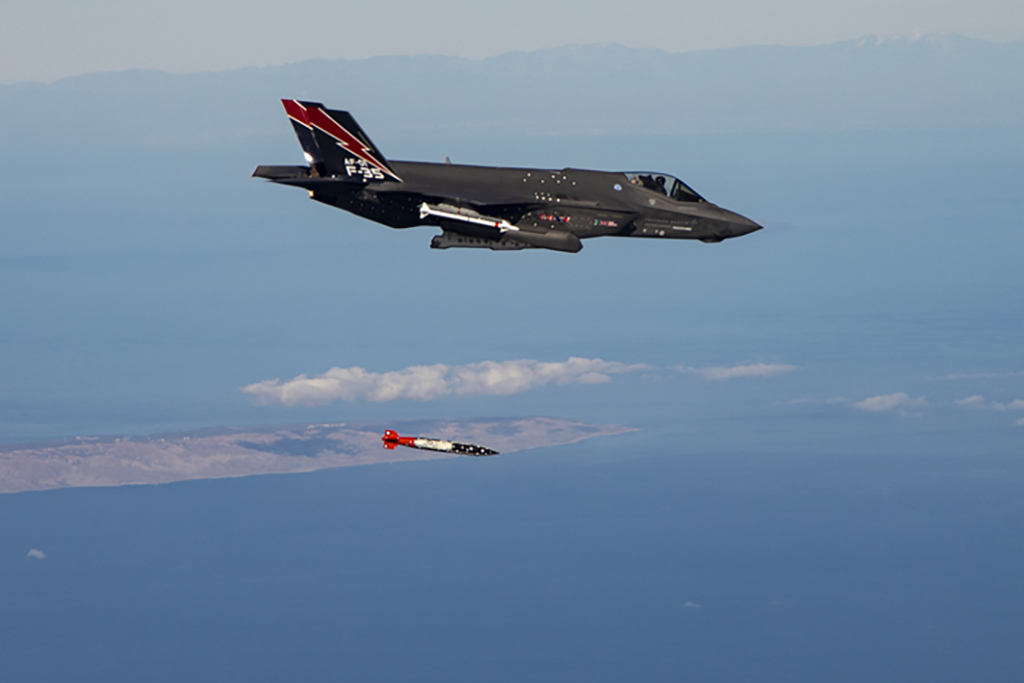Biden administration has added the UK to the list of countries where military bunkers are being upgraded for the storage of American nuclear weapons, according to the US defense budget documents.
The US Air Force (USAF) used to store nuclear gravity bombs at RAF Lakenheath near the village of Lakenheath in Suffolk, England, the UK, which in the 1990s had 33 underground storage vaults.
By the early 2000s, the vaults at Lakenheath had a total of 110 B61 nuclear gravity bombs for delivery by F-15E aircraft of the 48th Fighter Wing of the USAF in Europe (USAFE).
However, in 2008, it was reported that the nuclear weapons had been withdrawn from RAF Lakenheath and now the US appears to be wanting to return them to those bunkers after 14 years of standing empty.
In the Biden administration’s FY2023 defense budget request, the UK was added to the list of countries which includes Belgium, Germany, Italy, the Netherlands, and Turkey where infrastructure upgrade is underway as part of a 13-year NATO investment program at “special weapons” storage sites which store an estimated 100 B61 nuclear bombs.
The 2023 budget request says that Nato “is wrapping up a 13-year, $384m infrastructure investment program at storage sites in Belgium, Germany, Italy, the Netherlands, the UK, and Turkey to upgrade security measures, communication systems, and facilities”.

According to Hans Kristensen, the director of the nuclear information project at the Federation of American Scientists (FAS), who first reported about the addition of the UK to the list, the vaults in the US Air Base at RAF Lakenheath are now being upgraded so that the new B61-12 bombs can be stored there if needed.
B61-12 is the latest variant of the B61 family of air-launched nuclear gravity bombs which the US military has been operating since 1968. The new variant is aimed at enhancing the nuclear capabilities of the US and allied nations.

The bomb can be air-launched by the aircraft platforms such as B-2A, F-15E, F-16C/D, F-16 MLU, PA-200, F-35, and B-21.
In December 2021, the National Nuclear Security Administration (NNSA) announced that the first production unit of the B61-12 had been completed.
Full-scale manufacturing is expected to begin in May 2022 and production is to be completed sometime in 2026, according to the NNSA. The project is expected to cost $8.4 billion in total.
The B61-12 is based on the B61-4 warhead with the new tail kit guidance assembly which combines the new guided freefall capability with the existing ballistic (unguided) delivery capability of the B61 bomb. Equipped with four maneuverable fins, the tail section offers high levels of accuracy and limited stand-off capability over the previous variants.
It has a length of 12ft and weighs approximately 825lb. It can be fired at the target in either ballistic gravity or guided drop modes. It has a low-yield nuclear warhead to destroy military targets with minimum collateral damage. Located in the bomb’s middle section, the warhead has four yield options, including 0.3kt, 1.5kt, 10kt, and 50kt.
The bomb uses an inertial navigation system (INS) to achieve high kill probability while improving the survivability of the launch platform. The weapon is expected to have an accuracy of approximately 30m.
The USAF is scheduled to begin training the nuclear units in Europe within the next year to receive the new B61-12 guided nuclear bomb. The first B61-12 bombs are expected to be shipped to Europe in 2023, where they will replace the B61 bombs currently deployed there.
The nuclear upgrade at RAF Lakenheath is possibly the part of this drive when looked at in conjunction with the preparations of this facility to become the first USAF base in Europe to have a squadron of nuclear-capable F-35A Lightning.

The first of the fifth-generation fighter-bombers arrived at RAF Lakenheath in December 2021 and a total of 24 F-35As will form the 495th Fighter Squadron of the 48th Fighter Wing at the base.
The upgrades come against the backdrop of the latest nuclear threats against NATO from Russian President Vladimir Putin following the Russian invasion of Ukraine.
Reports suggest that the Biden administration’s nuclear posture review sent to the U.S. Congress, which as of yet remains classified, leaves open the option of nuclear first use rather than only in retaliation to a nuclear attack.
This is a turnaround from President Biden’s election pledge where he said he would formally declare the sole purpose of nuclear weapons to be deterrence of a nuclear attack against the United States or its allies.
Moreover, last year Britain announced a 40% increase in its stockpile of Trident nuclear warheads, the first such increase since the end of the cold war.
However, of late NATO has been careful not to irk Russia amid Putin’s nuclear saber-rattling. The US has canceled scheduled tests of its intercontinental ballistic missiles, for example.
Therefore, Hans Kristensen of the FAS suggests that the nuclear upgrade at RAF Lakenheath does not necessarily reflect plans to deploy additional US nuclear bombs to Europe but could rather be potentially aimed at increasing the flexibility of the existing nuclear deployment within Europe, without increasing the number of weapons.
Adding RAF Lakenheath as an active site would potentially allow the nuclear weapons from other existing locations in Europe to be transferred there, if necessary.
With the increased accuracy and standoff capability of the new B61-12 guided nuclear bombs, especially in combination with the stealthy F-35A fighter-bomber, RAF Lakenheath could represent a considerable enhancement of NATO’s nuclear posture in Europe in light of deteriorating relations with Russia.
- Written by Tanmay Kadam/EurAsian Times Desk
- Contact the author at etdesk@eurasiantimes.com
- Follow EurAsian Times on Google News





